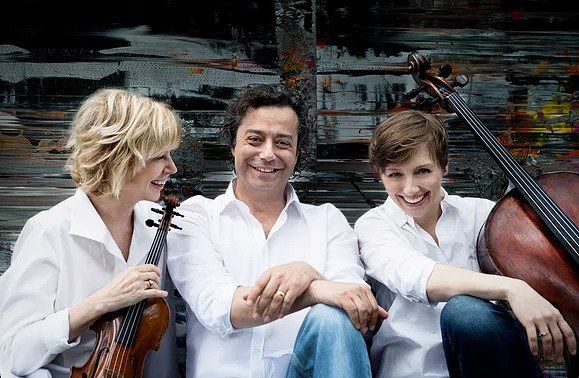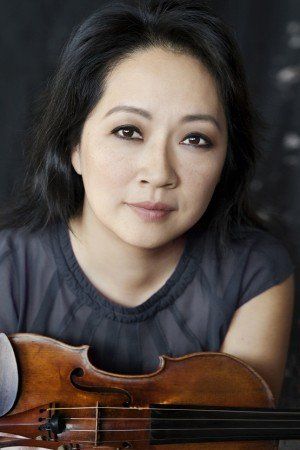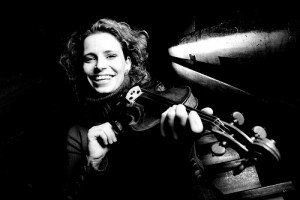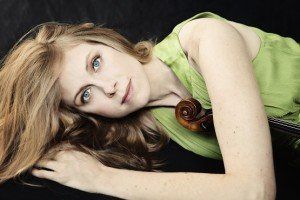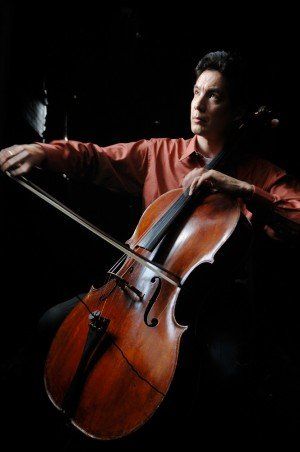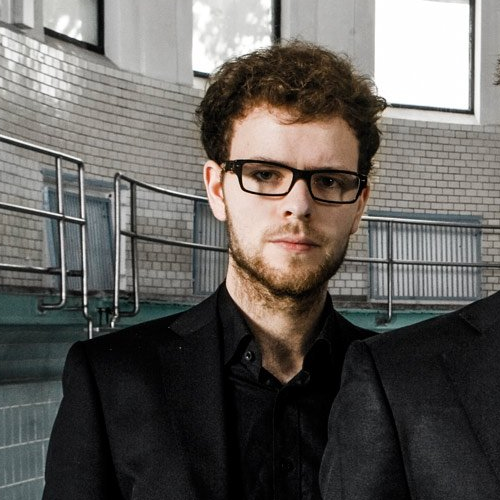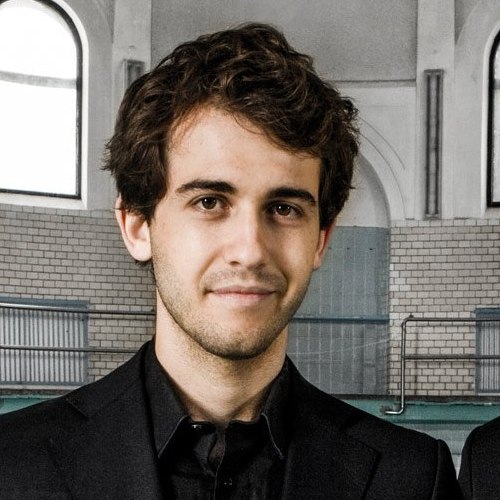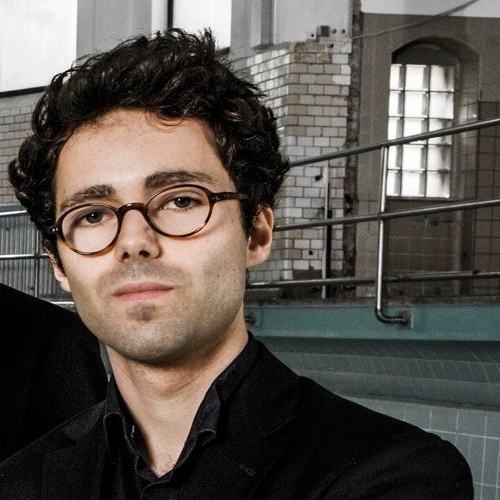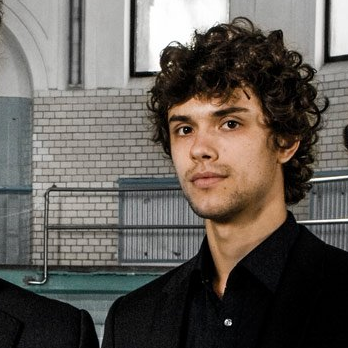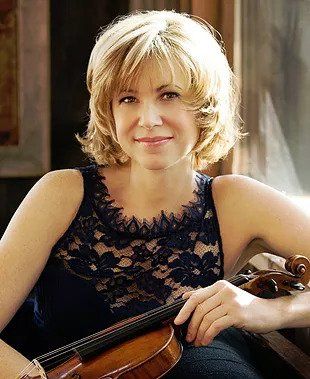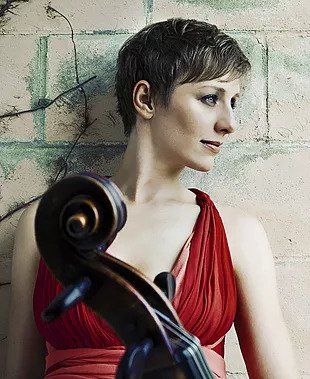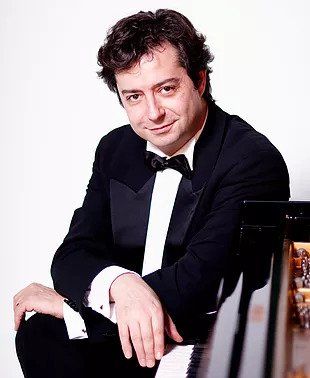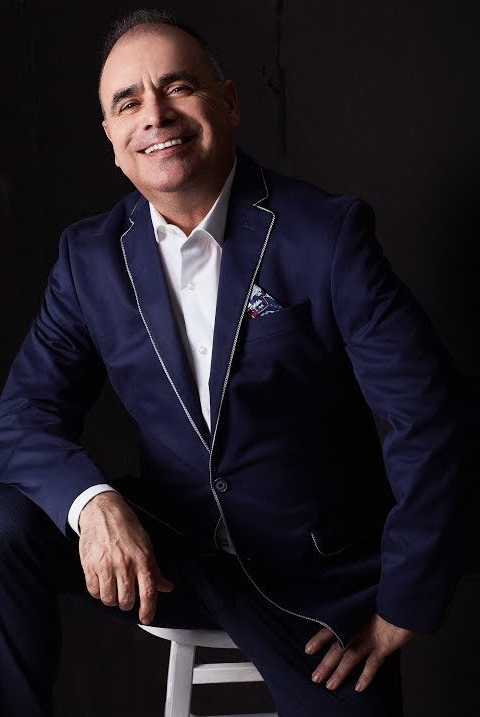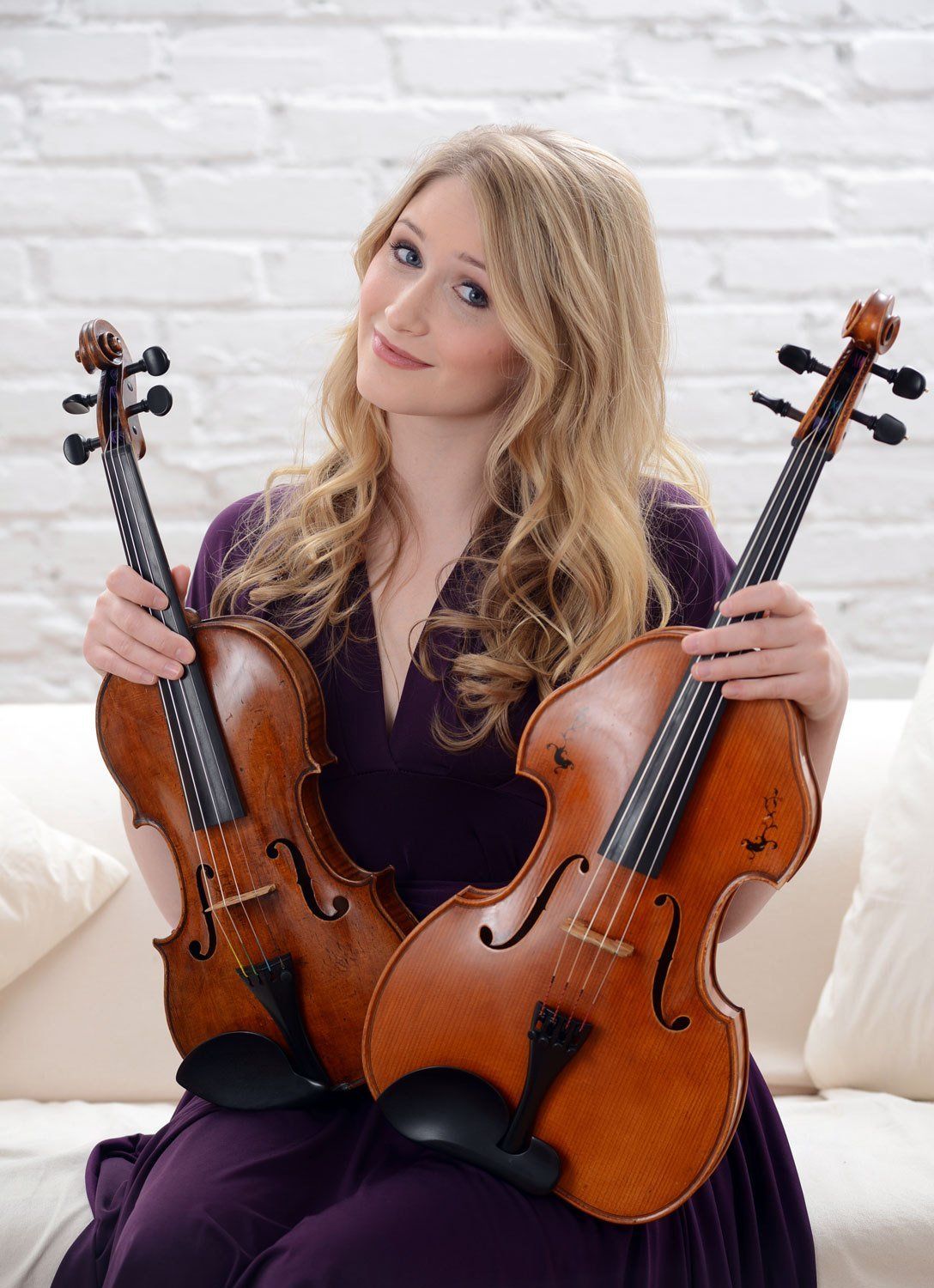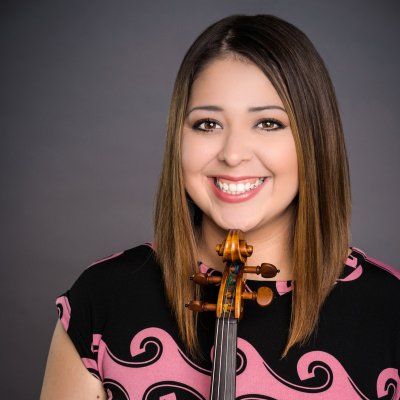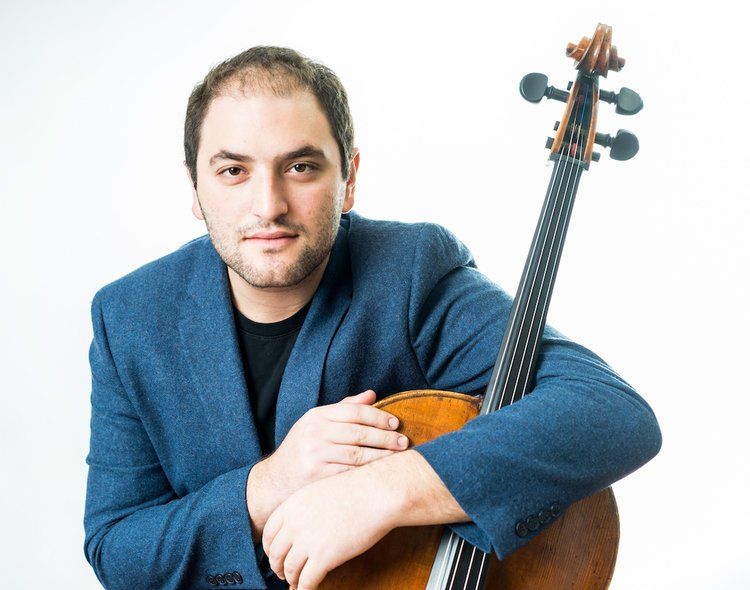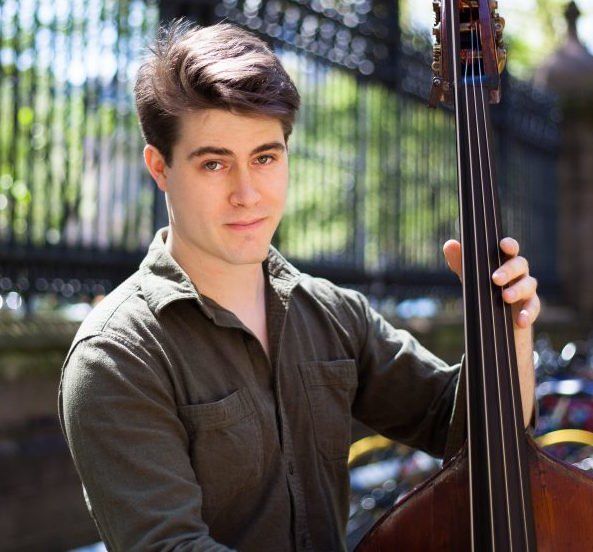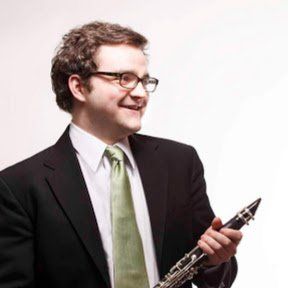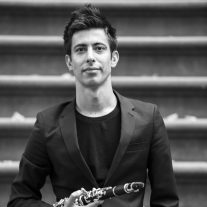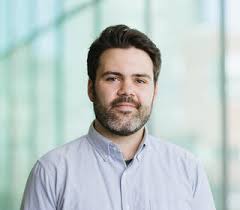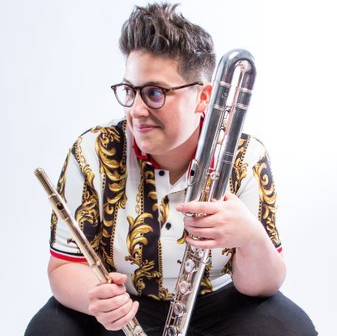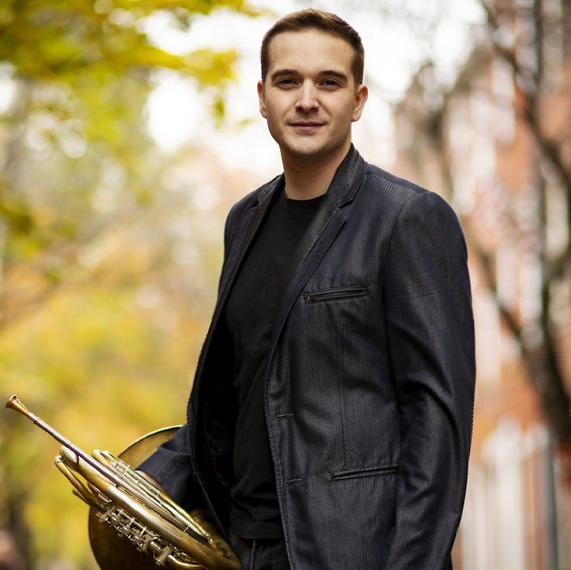DAEDALUS QUARTET
October 10, 2019, 7:30pm

“luminous, insightful and vibrant”
New York Times
New York Times
"The Daedalus Quartet seemed it was flying not on wings of waxy feathers, but rather on jet-propelled rockets of blistering virtuosity ... The music rang gloriously, and the audience emerged wowed and grateful."
Washington Post
Washington PostSlide title
"String Quartets as philosophically like-minded as the Daedalus don't come along very often."
Philadelphia Inquirer
Slide title
"The finale showcased the tremendous emotional power of these musicians, from the swelling, sobbing opening to the ecstatic conclusion."
The Cincinnati Enquirer
The Cincinnati Enquirer
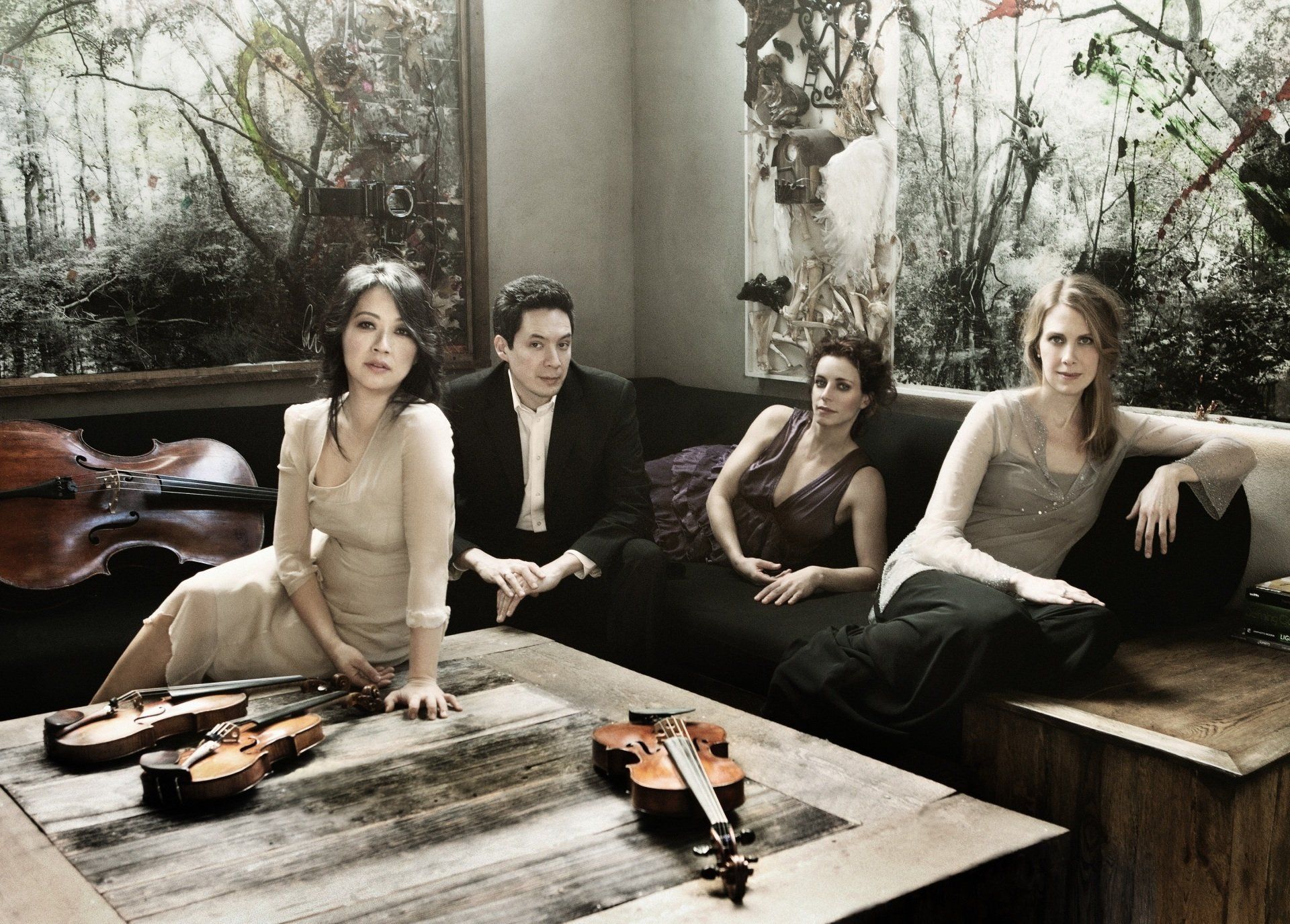
Slide title
Write your caption hereButton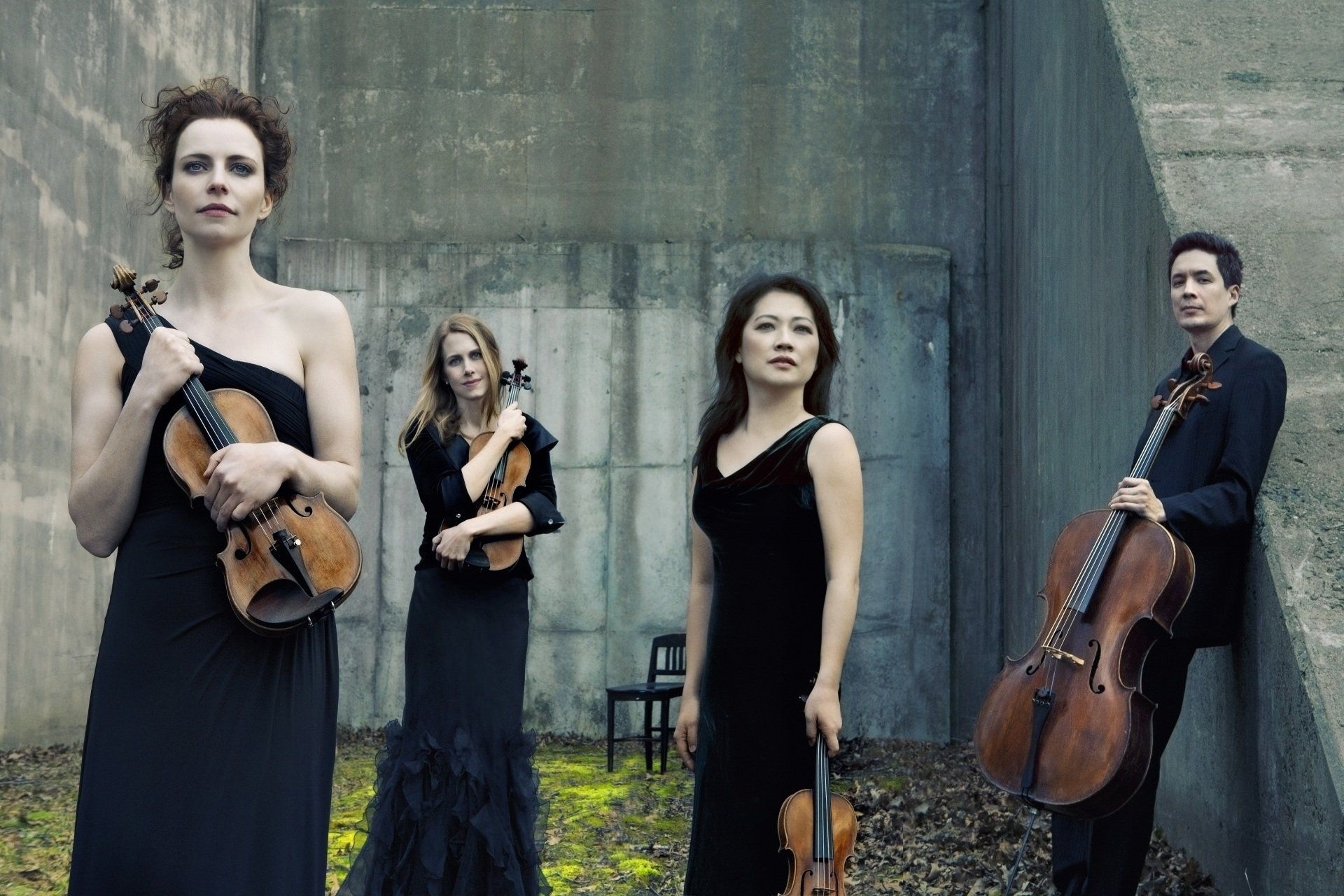
Slide title
Write your caption hereButton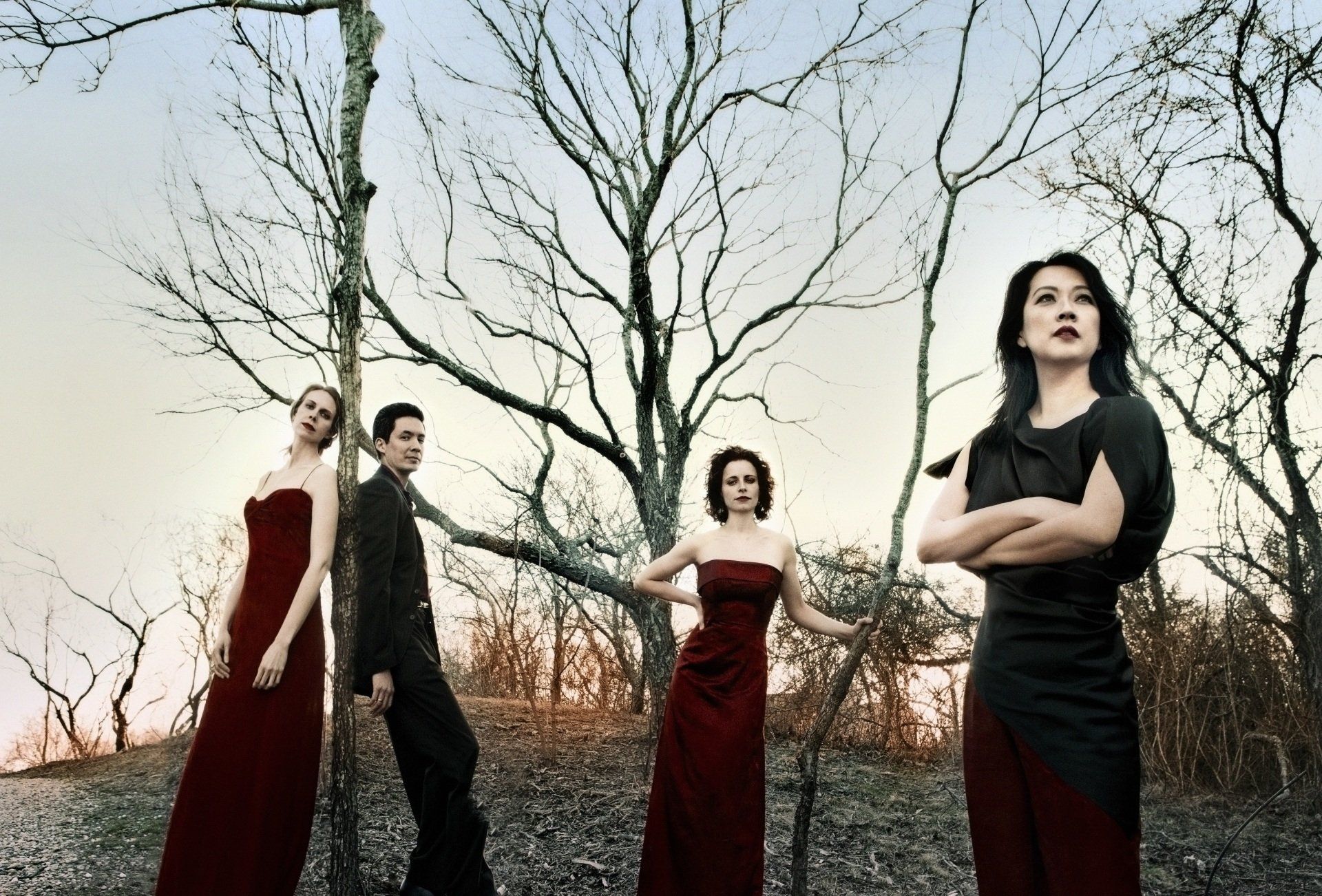
Slide title
Write your caption hereButton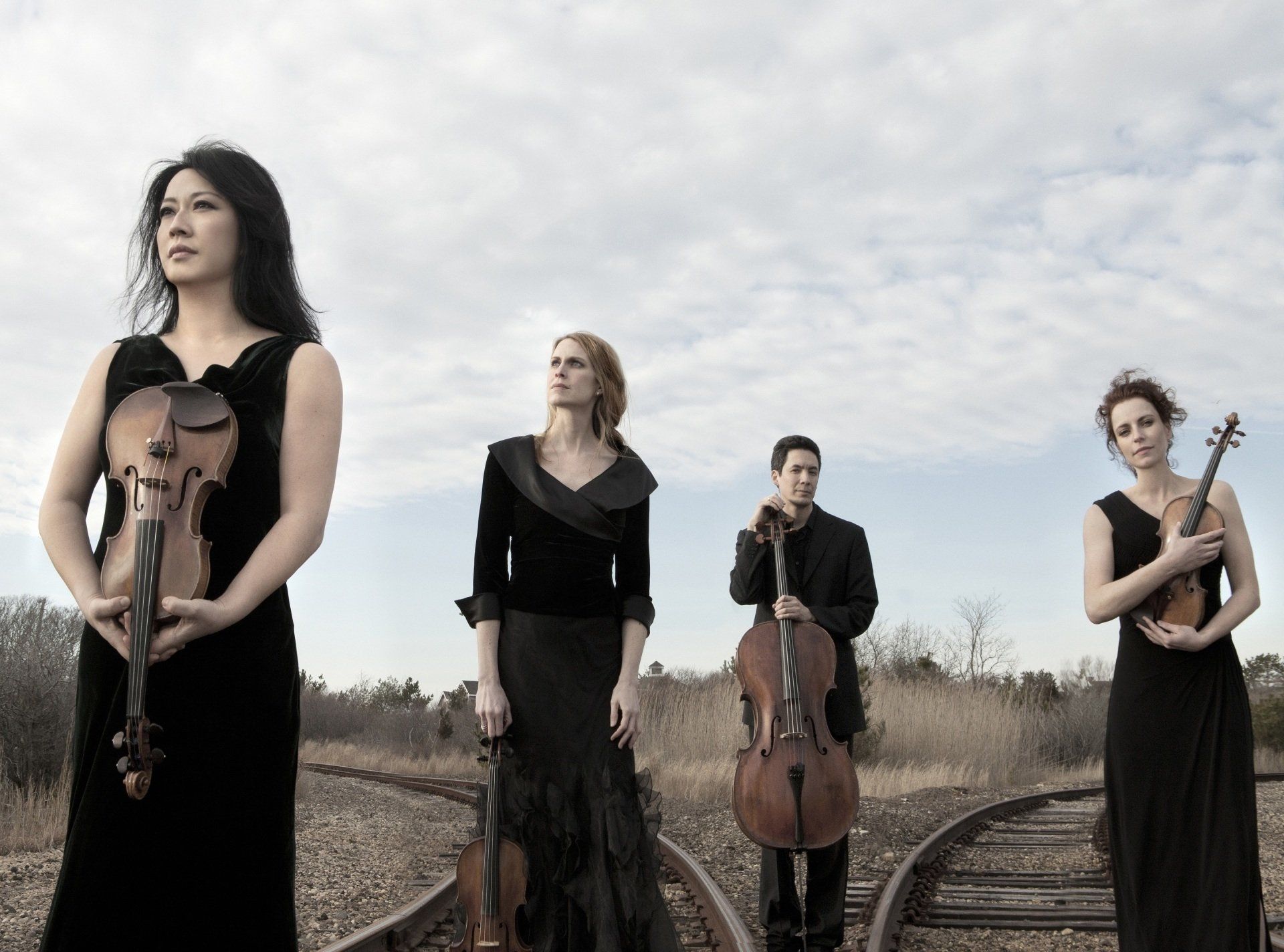
Slide title
Write your caption hereButton
The Concert
- HAYDN: String Quartet in F major, Op, 50, No. 5, 'The Dream'
As its nickname "The Dream" might imply, Joseph Haydn's String Quartet in F major, Op, 50 is the lightest and most amiable of the Op. 50 "Prussian" set. However, the genial, serenade-like tone coexists with immense compositional sophistication.
I. Allegro moderato
II. Poco adagio
III. Tempo di Menuet. Allegretto - Trio
IV. Finale. Vivace
Composed: 1787
- JANACEK: String No. 2, "Intimate Letters"
Leoš Janáček (1854-1928) wrote "Intimate Letters" in 1928 and ever since it has been referred to as Janáček's "manifesto on love." Its nickname was actually given by the composer himself and inspired by his long and spiritual friendship with Kamila Stösslová, a married woman 38 years his junior.
I. Andante - Con moto - Allegro
II. Adagio - Vivace
III. Moderato - Andante - Adagio
IV. Allegro - Andante - Adagio
- ROCHBERG: String Quartet No. 3
We are expremely pleased to have the opportunity to present this landmark work by the remarkable American composer George Rochberg (1918-2005).
String Quartet No. 3 received its premiere performance on May 15, 1972, by the Concord String Quartet, and represents a landmark move away from serialism for Rochberg.
Long a serial composer, he abandoned the practice following the death of his teenage son in 1964, stating that this compositional technique had proved inadequate to express his grief and he had found it empty of expressive intent.
I. Introduction. Fantasia
II. March
III. Variations
IV. March
V. Finale. Scherzos and Serenades
VISION QUARTETNovember 14, 2019, 7:30pm

"Amazingly vivacious, vivid and electrifying… the hot-blooded guys from the vision string quartet seem to be completely fearless."
Der Tagesspiegel, Berlin
Der Tagesspiegel, Berlin
"Without a net or a false bottom, the highly motivated musicians venture into extreme areas of emotional expression."
Die Welt
Die WeltSlide title
"The vision string quartet combines the highest musical standards with the appearance of a rock band."
Wiesbadener Kurier
Wiesbadener Kurier
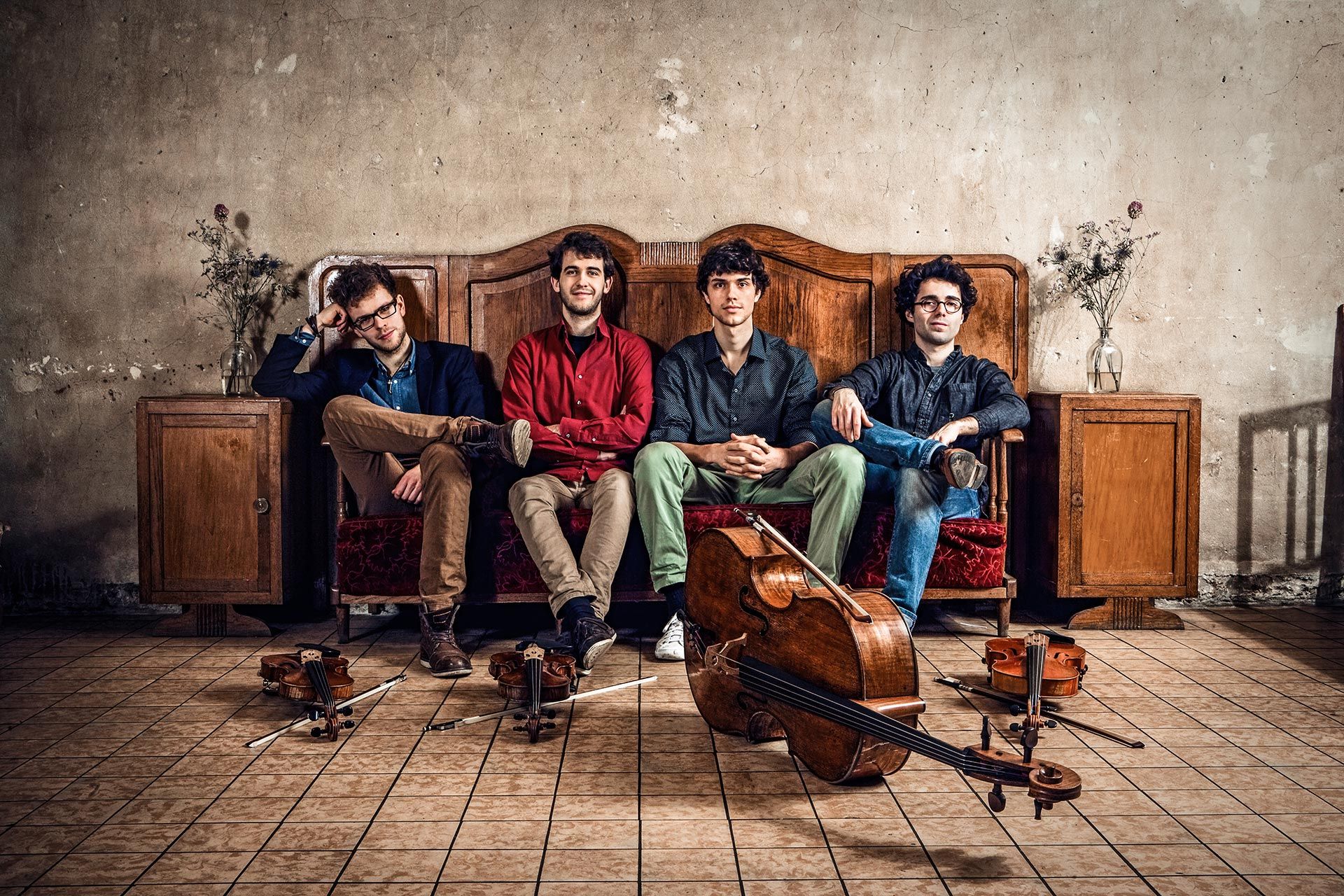
Slide title
Write your caption hereButton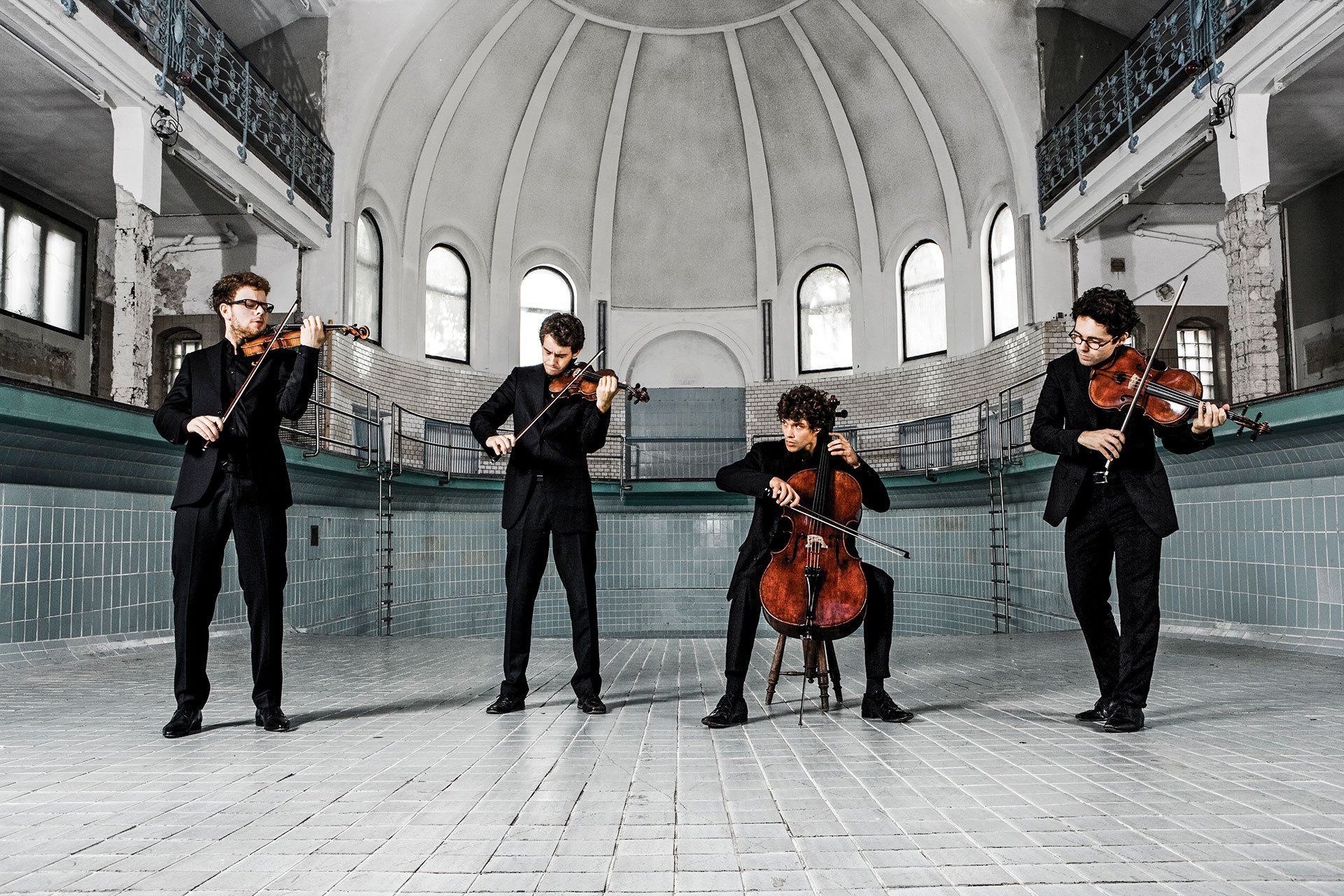
Slide title
Write your caption hereButton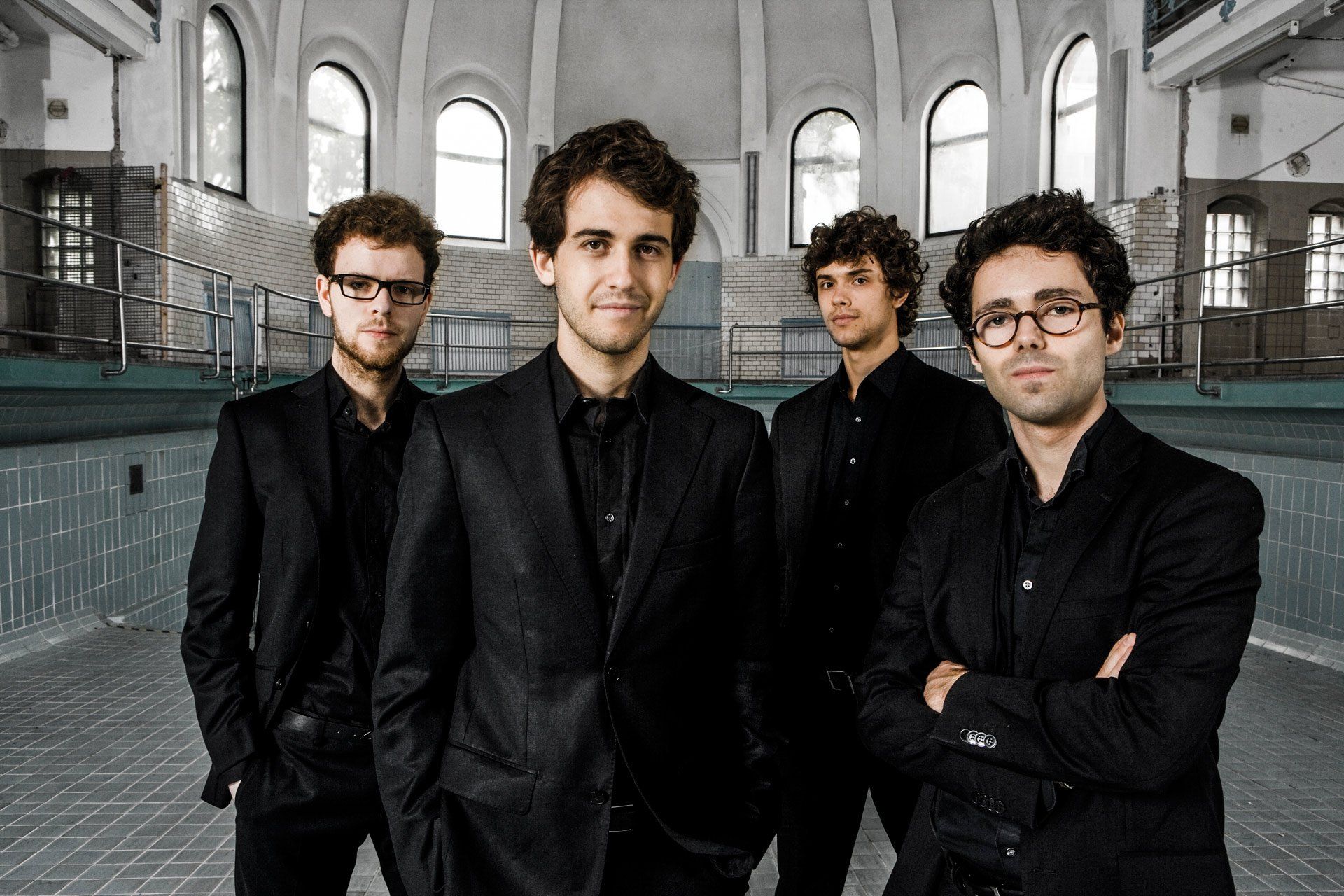
Slide title
Write your caption hereButton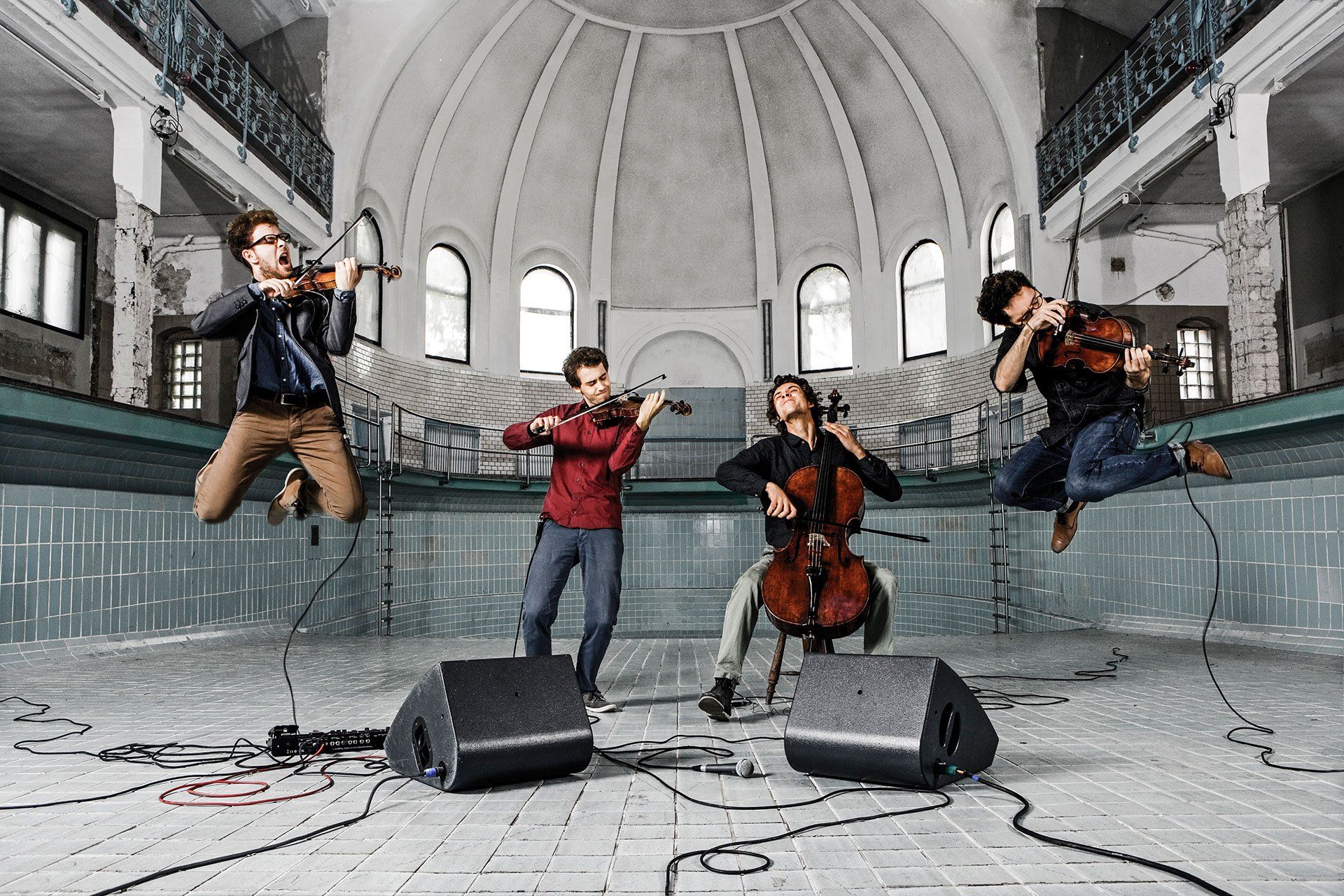
Slide title
Write your caption hereButton
The Concert
- HAYDN: String Quartet in G major, Op. 77, No. 1
In 1799, both an elderly Joseph Haydn (1732-1809) and a young Beethoven were simultaneously working on a new set of string quartets: Haydn's last and Beethoven's first. On this noteworthy "passing of the baton", the composers shared a common patron. A young Price Lobkowitz commissioned both composers around the same time. Beethoven's Op. 18 was published at the end of 1801, Haydn's Op. 77 in early 1802. It is no surprise that Haydn's last quartets are often called "Beethovenian" just as Beethoven's first quartets may be called "Haydnesque." (Kai Christiansen).
I. Allegro moderato
II. Adagio
III. Menuetto. Presto
IV. Finale. Presto
- BACEWICZ: String Quartet No. 4
Grażyna Bacewicz (1909-1969) was a renowned Polish composer and violinist. She is only the second Polish female composer to have achieved national and international recognition, the first being Maria Szymanowska in the early 19th century.
Many of her compositions were written for the violin, including seven string quartets. This prize-winning quartet No. 4, from 1951, was written in a neoclassical in style, with evident influences of Polish (and a little Spanish) folk music.
I. Andante - Allegro molto
II. Andante
III. Allegro giocoso
- SCHUMANN: String Quartet No. 3 in A major
Robert Schumann (1810-1856) composed this magnificent quartet in 1842, his "year of chamber music", where he miraculously produced three string quartets, the glorious piano quintet, and the equally superb piano quartet.
I. Andante espressivo - Allegro molto moderato
II. Assai agitato
III. Adagio molto
IV. Finale: Allegro molto vivace
TRIO SOLISTIMarch 19, 2020, 7:30pm

“The most exciting piano trio in America”
The New Yorker
The New Yorker
"Trio Solisti play with old-fashioned virtues - musical discipline, clear thinking, superb preparation - the performance values one has come to expect of legendary groups such as the early Juilliard Quartet or the Beaux Arts Trio."
The Calgary Herald
The Calgary HeraldSlide title
“The most fully explored, interestingly probed, and fully engaged performance that I’ve ever experienced. Chamber music connoisseurs should absolutely not miss Trio Solisti”
The Boston Musical Intelligencer
The Boston Musical IntelligencerSlide title
“A compelling performance…Trio Solisti really knocked it out of the ballpark”
Peninsula Reviews
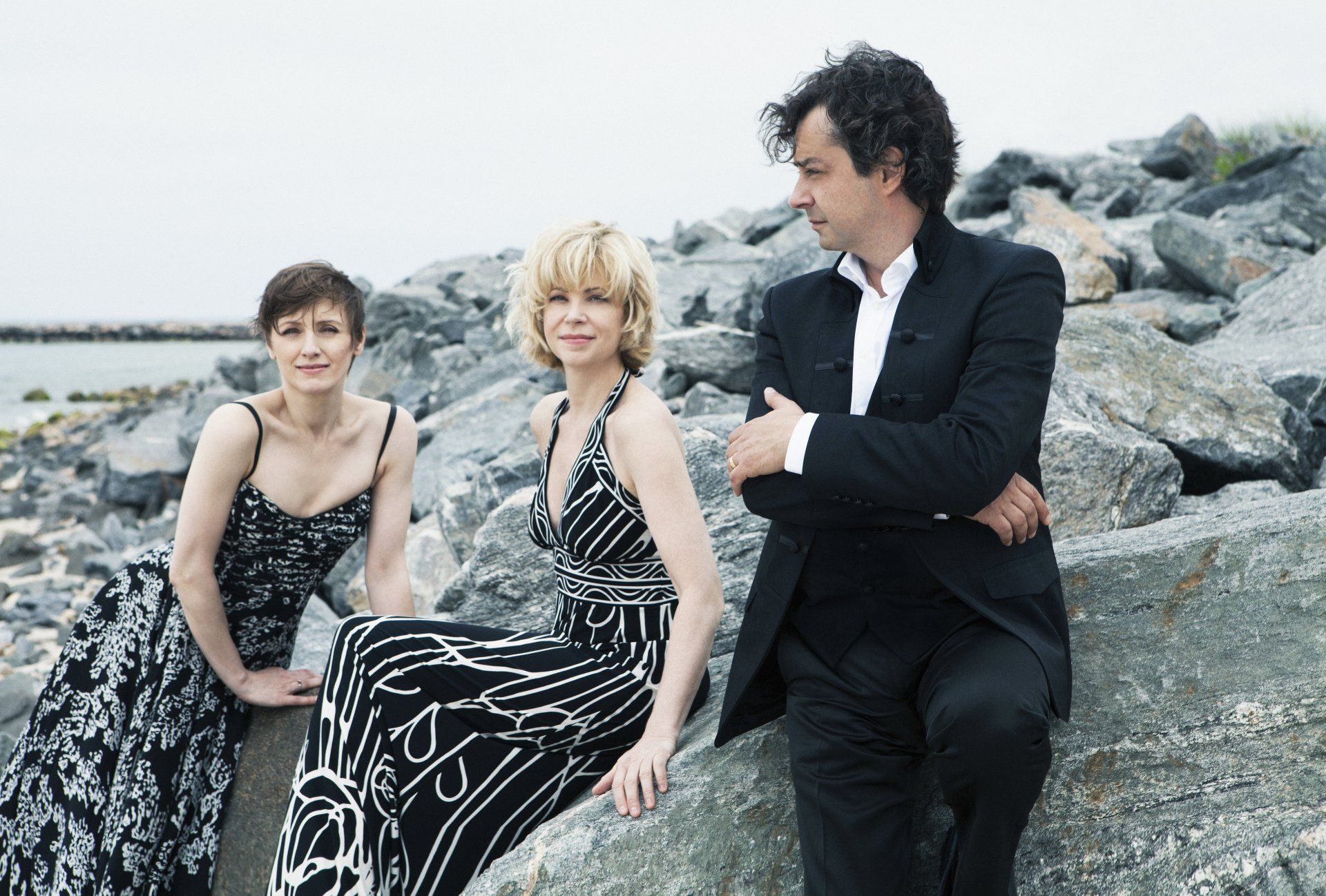
Slide title
Write your caption hereButton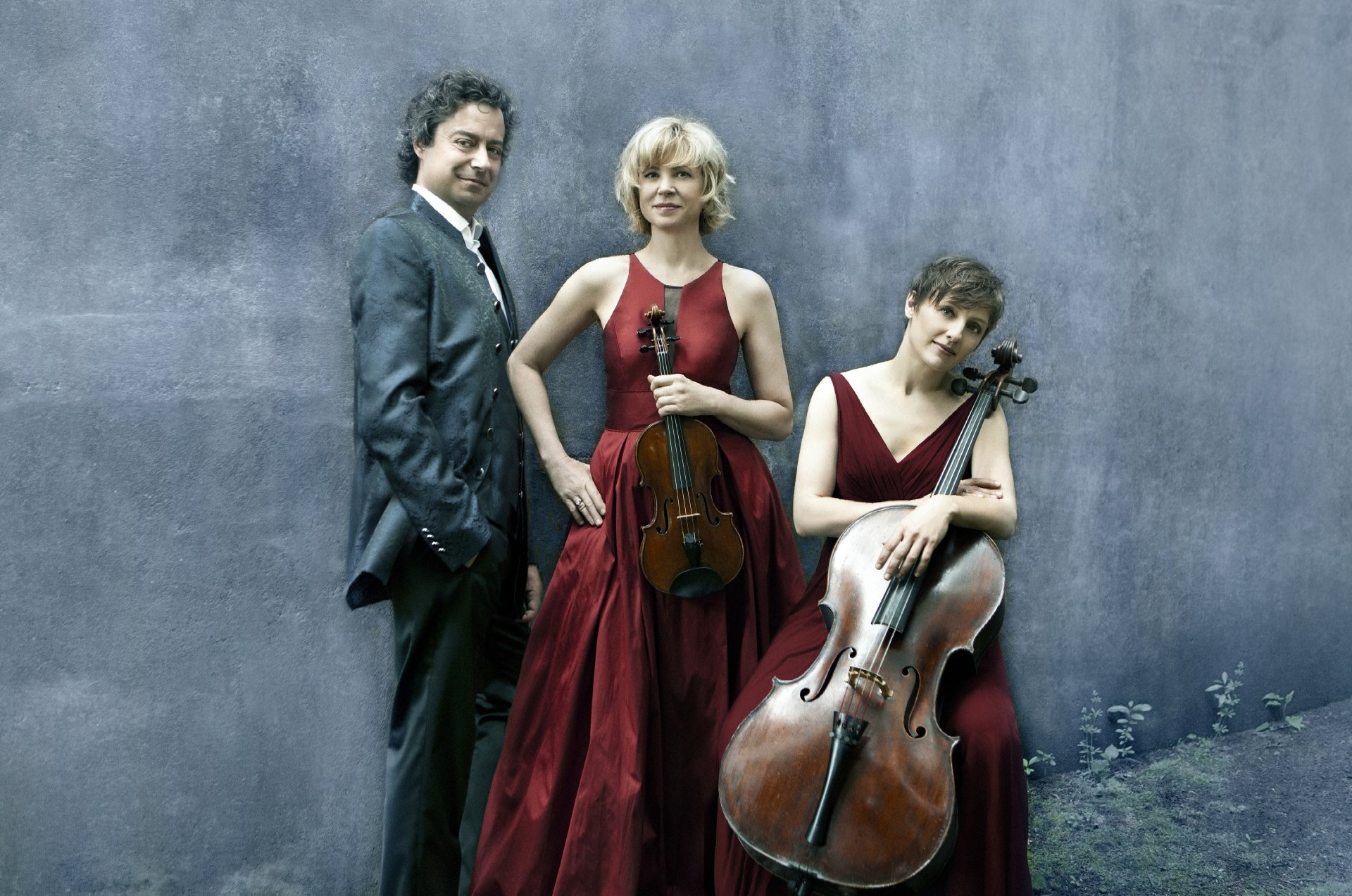
Slide title
Write your caption hereButton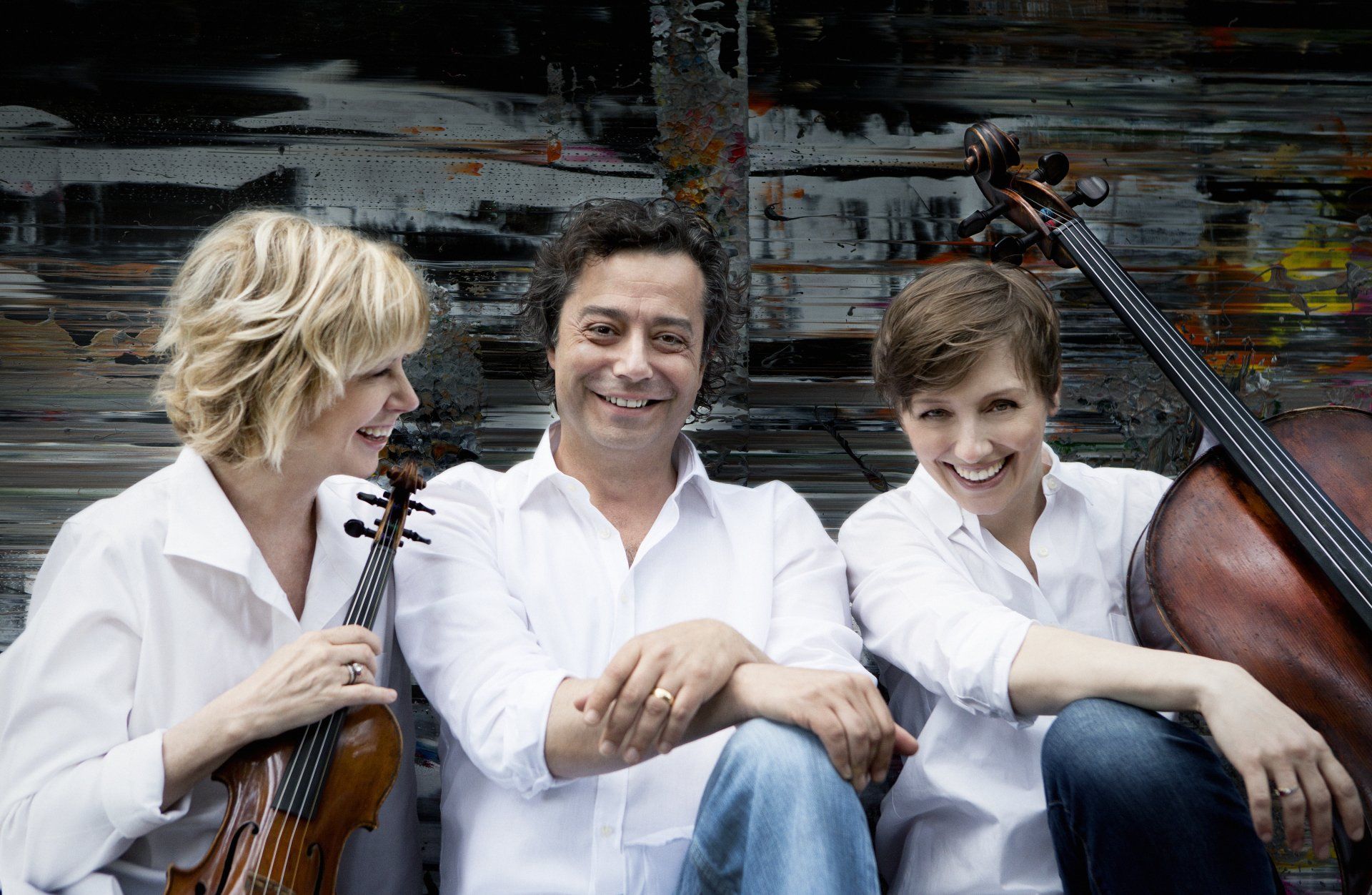
Slide title
Write your caption hereButton
The Concert
CANCELED
In compliance with State of Rhode Island mandates to fight against the devastating Covid-19 coronavirus, we have canceled this concert.
The health and well-being of our patrons are of paramount concern and we fully support the efforts being taken by local, state and federal health officials to control the spread of Coronavirus.
- HAYDN: Piano Trio in E flat Major, Hob. XV: 29
Joseph Haydn (1732–1809) composed his last piano trio (his 45th!) in 1797 and dedicated it to Therese Jansen Bartolozzi, a German pianist that had been a student of Muzio Clementi. This magnificent late work is full of character and humour and reflects the composer's full musical maturity.
I. Poco allegretto
II. Andantino ed innocentemente
III. Finale. Allemande. Presto assai
- RACHMANINOFF: Trio élégiaque No. 1 in G minor
Sergei Rachmaninoff (1873–1943) wrote this gorgeous one-movement trio when he was just 18 years old and still a student in Moscow. It is the first of two Trio Élégiaque written in 1892-93.
Despite his youth, Rachmaninoff shows in the virtuoso piano part his ability to cover a breathtaking spectrum of sound colors.
- BEETHOVEN: Piano Trio in D Major, "Ghost"
The two piano trios of Beethoven's Opus 70 were composed in 1808 during the composer's stay at the house of the Countess Marie von Erdödy, to whom he dedicated both works (as a thank you for her hospitality). Because of its curiously scored and undeniably eerie slow movement it has been nicknamed the "Ghost" Trio. A perfect way to celebrate Beethoven's 250 Birthday year!
I. Allegro vivace e con brio
II. Largo assai e espressivo
III. Presto
- CHAUSSON: Piano Trio in G minor, Op. 3
Ernest Chausson (1855-1899) was born in Paris to a wealthy family. He studied law and became a barrister but realized he had no interest in the law. He decided to pursue music at the Paris Conservatory in 1879 where he studied with Jules Massenet and Cesar Franck. This early and intense masterpiece was written in 1881 during this exploratory period. Sadly, Chausson died when he was 44 years old just as his career was beginning to flourish.
I. Pas trop lent - Animé
II. Vite
III. Assez lent
IV. Animé
The Artists
View Ensemble Bio
FRISSON ENSEMBLEApril 23, 2020, 7:30pm

"Their touch is light, their musicianship perfect. One also feels that there is an underlying bond of friendship amoung them which makes for perfect teamwork and almost extrasensory ability to anticipate as well as support the other musicians."
The Royal Gazette
The Royal Gazette
"Frisson Artistic Director Thomas Gallant on oboe was excellence personified, punctuated by his charm, grace and especially humor in speaking to the audience."
Borrego Sun
Borrego Sun
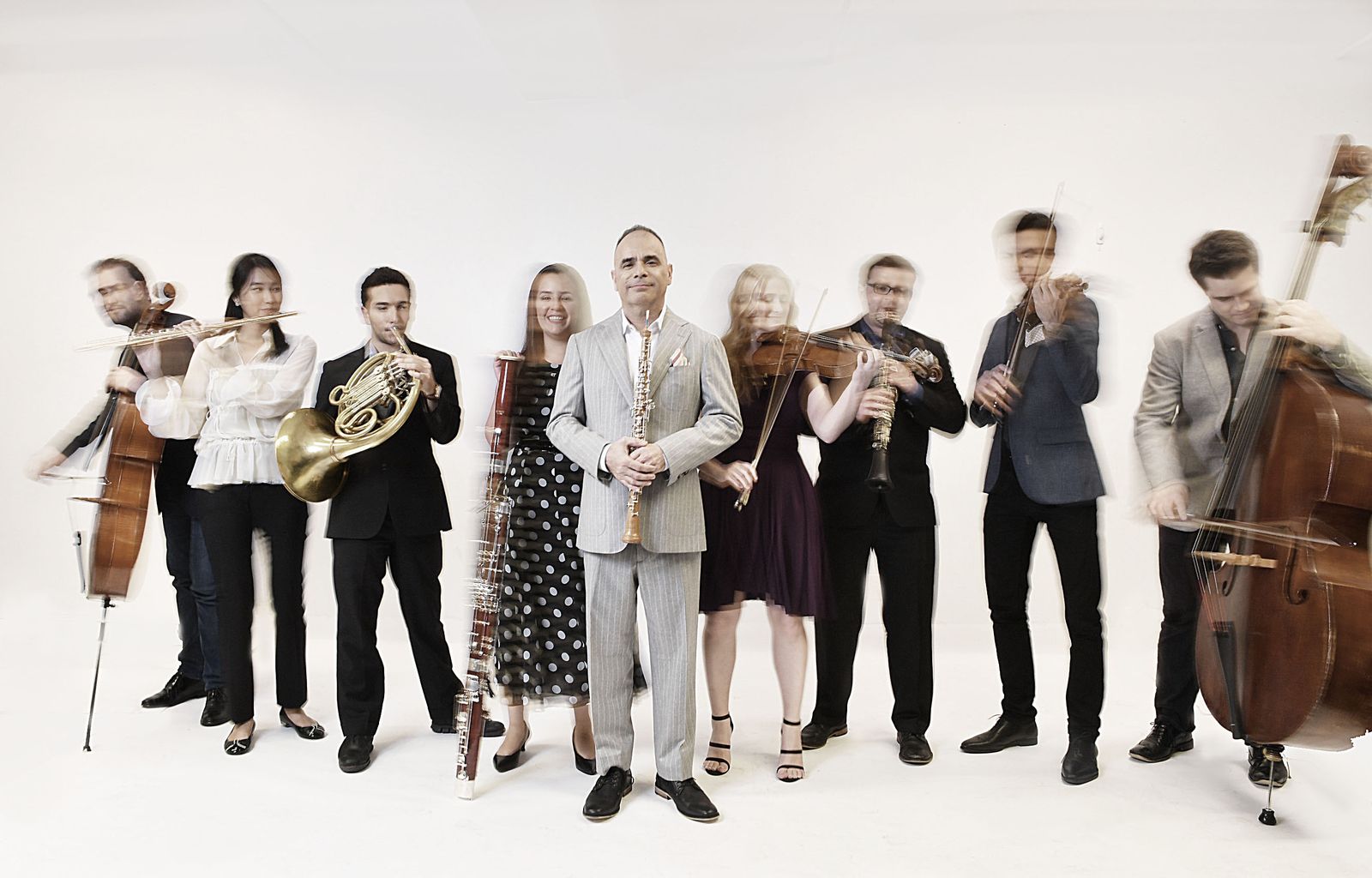
Slide title
Write your caption hereButton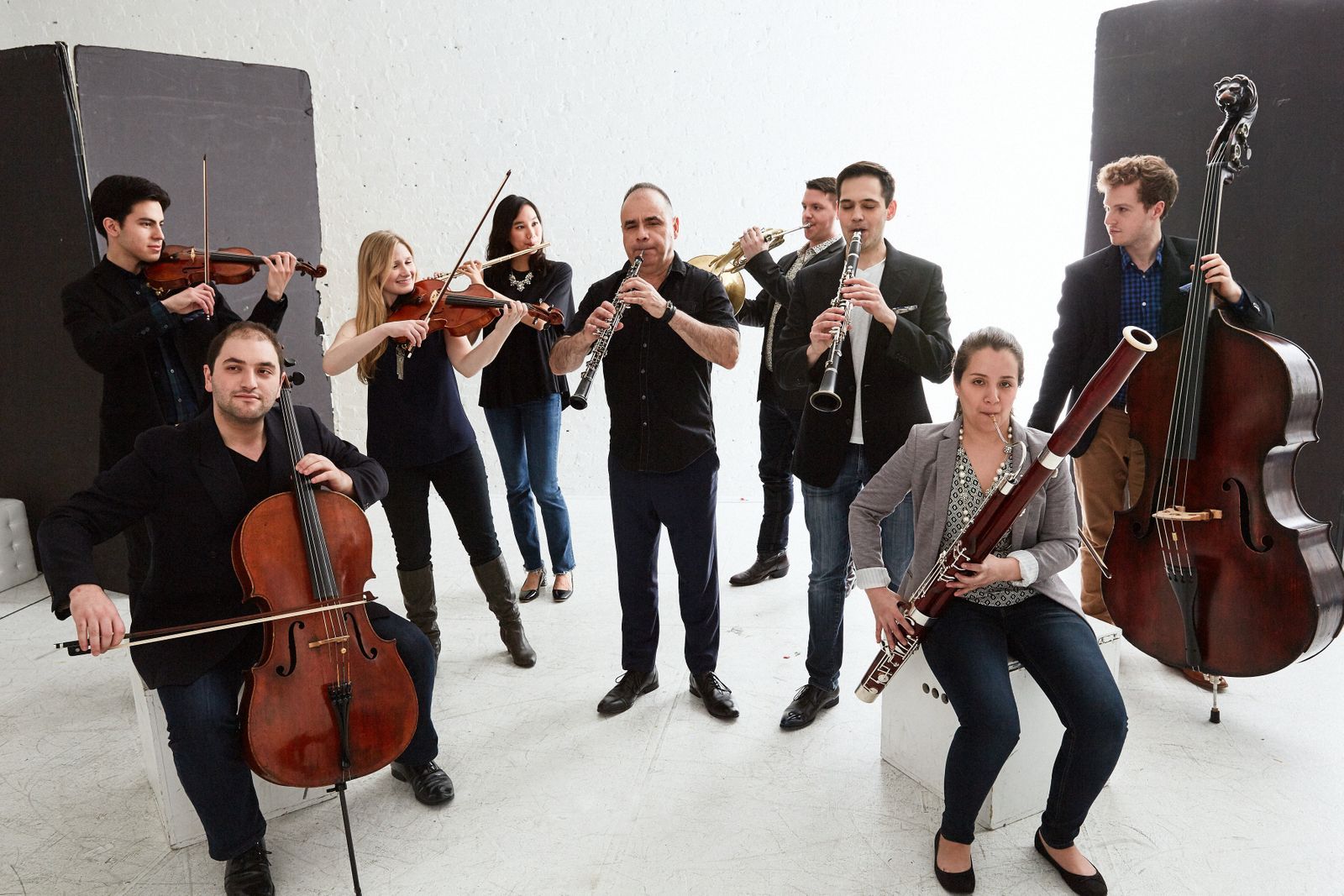
Slide title
Write your caption hereButton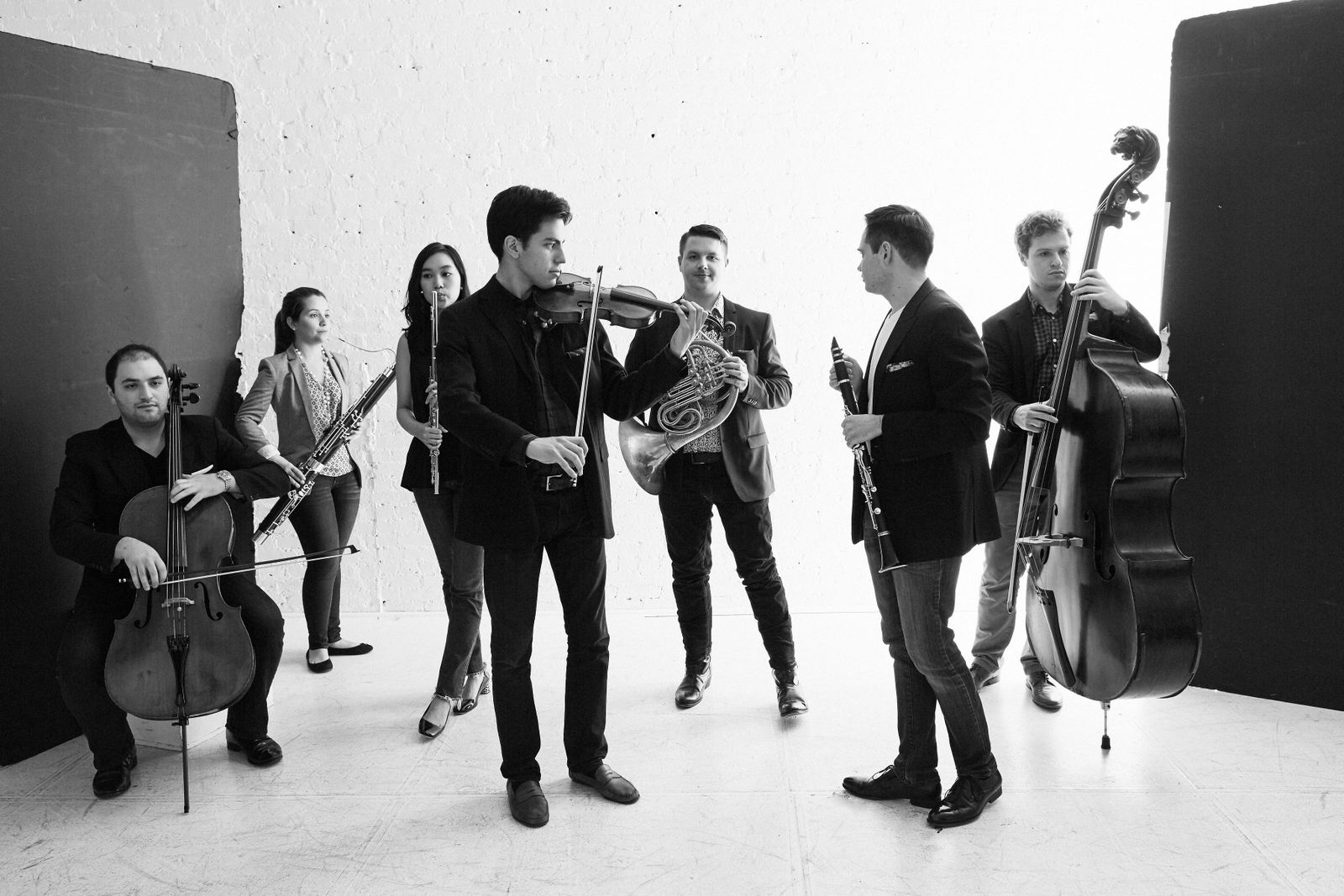
Slide title
Write your caption hereButton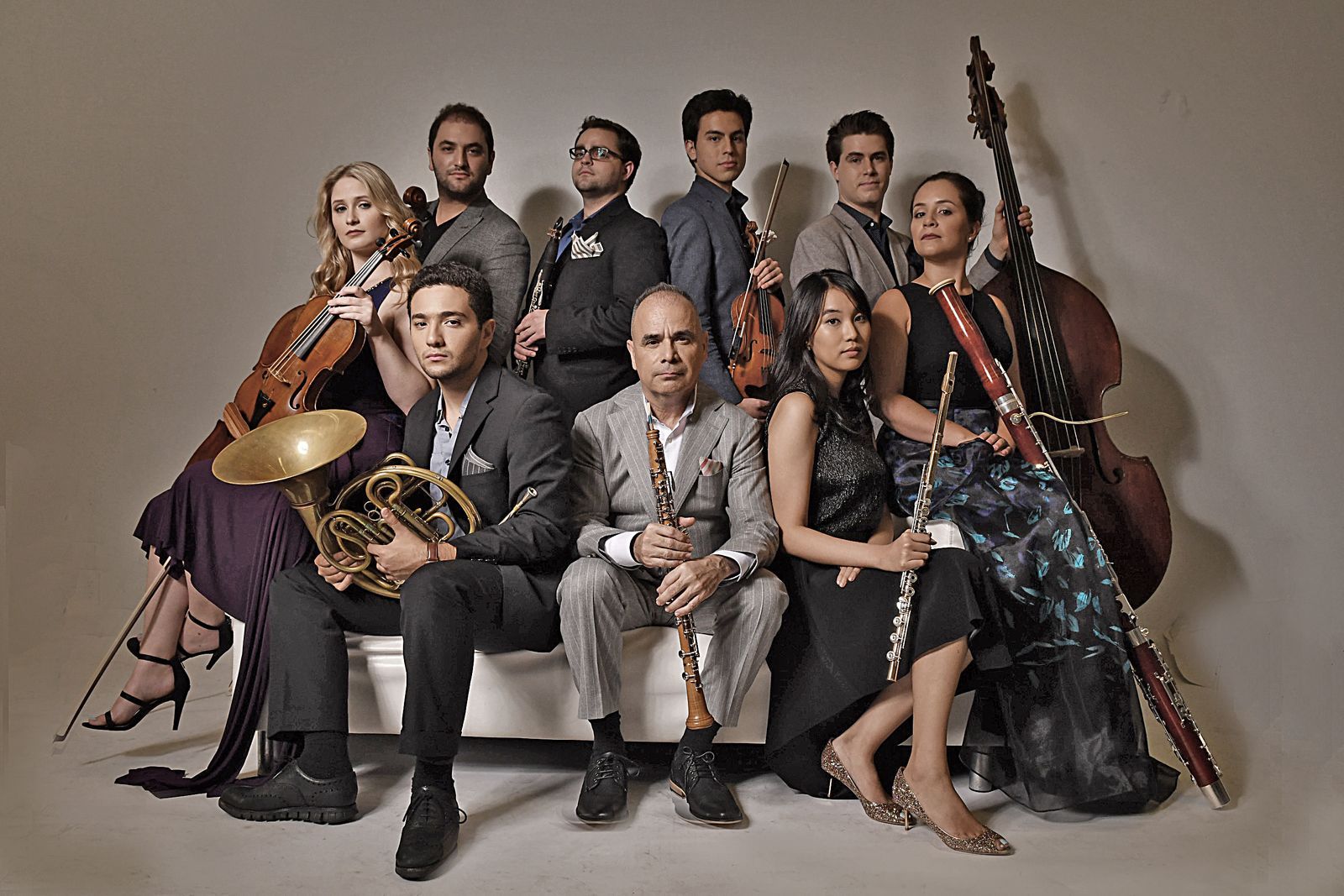
Slide title
Write your caption hereButton
The Concert
CANCELED
In compliance with State of Rhode Island mandates to fight against the devastating Covid-19 coronavirus, we have canceled this concert.
The health and well-being of our patrons are of paramount concern and we fully support the efforts being taken by local, state and federal health officials to control the spread of Coronavirus.
- BRAHMS: Serenade Op. 11, for nonet
The two Serenades, Op. 11 and 16, represented two of the earliest efforts by Johannes Brahms to write orchestral music. They both date from after the 1856 death of Robert Schumann when Brahms was residing in Detmold and had access to an orchestra.
The first serenade, Op. 11, was completed in 1858, at the same time that Brahms was also working on his Piano Concerto No. 1. Originally scored for wind and string octet, and then expanded into this longer work for chamber nonet, the serenade was later adapted for orchestra in 1959.
Allegro molto
Scherzo. Allegro non troppon — Trio
Adagio non troppo
Menuetto I — Menuetto II
Scherzo. Allegro — Trio
Rondo. Allegro
- DEBUSSY: Syrinx, for solo flute
Syrinx is a one movement work for solo flute that Claude Debussy wrote in 1913. It is considered the first significant piece for solo flute after the Sonata in A minor composed by C. P. E. Bach over 150 years earlier. It is also the first such solo composition for the modern Böhm flute, perfected in 1847, and played a pivotal role in the development of solo flute music in the early twentieth century.
Syrinx was written as incidental music to the uncompleted play Psyché by Gabriel Mourey. Its evocative name is in reference to the myth of the amorous pursuit of the nymph Syrinx by the god Pan, in which Pan falls in love with Syrinx, however, as Syrinx does not return the love to Pan, she turns herself into a water reed and hides in the marshes. Pan cuts the reeds to make his pipes, in turn killing his love.
- BRITTEN: Phantasie Quartet, Op. 2, for oboe and strings
Britten composed his one-movement Phantasy Quartet for oboe and string trio in 1932 when he was 18 and a student at the Royal College of Musica. It was his second published work and dedicated to the acclaimed oboist Léon Goossens, who played the first performance in a BBC broadcast on August 6, 1933.
- GERSHWIN: Three Preludes, for clarinet and strings
George Gershwin was inspired by the idea of composing a cycle of 24 preludes for the keyboard like those of Bach and Chopin. He only completed 6 in 1926, and only published these three.
These innovative works are heavily jazz influenced, featuring syncopated rhythms, flattened sevenths, and blues motifs.
1. Allegro ben ritmato e deciso
2. Andante con moto e poco rubato
3. Allegro ben ritmato e deciso
- JANACEK: Mladi, for wind sextet
The woodwind sextet, Mladi (which means Youth), is a chamber composition written in May 1924 by Czech composer Leoš Janáček (1854-1928) as a reminiscence of his youth in the Old Brno Monastery. It is scored for flute, oboe, clarinet, horn, bassoon and bass clarinet.
Historians suggest that the idea for the work came as a result of the his visit to the festival of the International Society of Contemporary Music in Salzburg in August 1923.
I. Allegro
II. Andante sostenuto
III. Vivace
IV. Allegro animato
The Artists
-
Thomas Gallant
View BioArtistic Director
oboe
-
Caeli Smith
View BioAssociate Director
viola
-
Adelya Nartadjieva
View Bioviolin
-
Julian Schwarz
View Biocello
-
Sam Suggs
View Biodouble bass
-
Bixby Kennedy
View Bioclarinet
-
Nuno Antunes
View Biobass clarinet
-
Remy Taghavi
View Biobassoon
-
Isabel Gleicher
View Bioflute
-
Erick Huckins
View Biohorn
Sign up to receive updates by email
Subscribe Website Footer
Thank you for signing up for our newsletter! We promise to respect your Inbox and will only send ocassional emails to remind you of upcoming concerts, special events and other exciting news. You will have the option to unsubscribe at any time using a link provided in every email.
There seems to have been an error submitting the form. Please try again later or contact us directly at jcorreia@ricmc.org
Rhode Island Chamber Music Concerts is dedicated to enriching the cultural life of the Ocean State by presenting affordable chamber music concerts by internationally renowned and award-winning classical artists.
The continuing success of this remarkable public series is dependent upon funding from grants, endowments and the generosity of individual audience members.
Consider supporting our concerts and artists with a charitable one-time or monthly donation. Click
HERE
Office: (401) 863-2416
PO Box 2631
Providence, RI 02906
Concert Venue: McVinney Auditorium
43 Dave Gavitt Way, Providence, RI
Free parking at the venue:
(Set your GPS for 30 Fenner Street to go directly to the adjacent parking lots)

